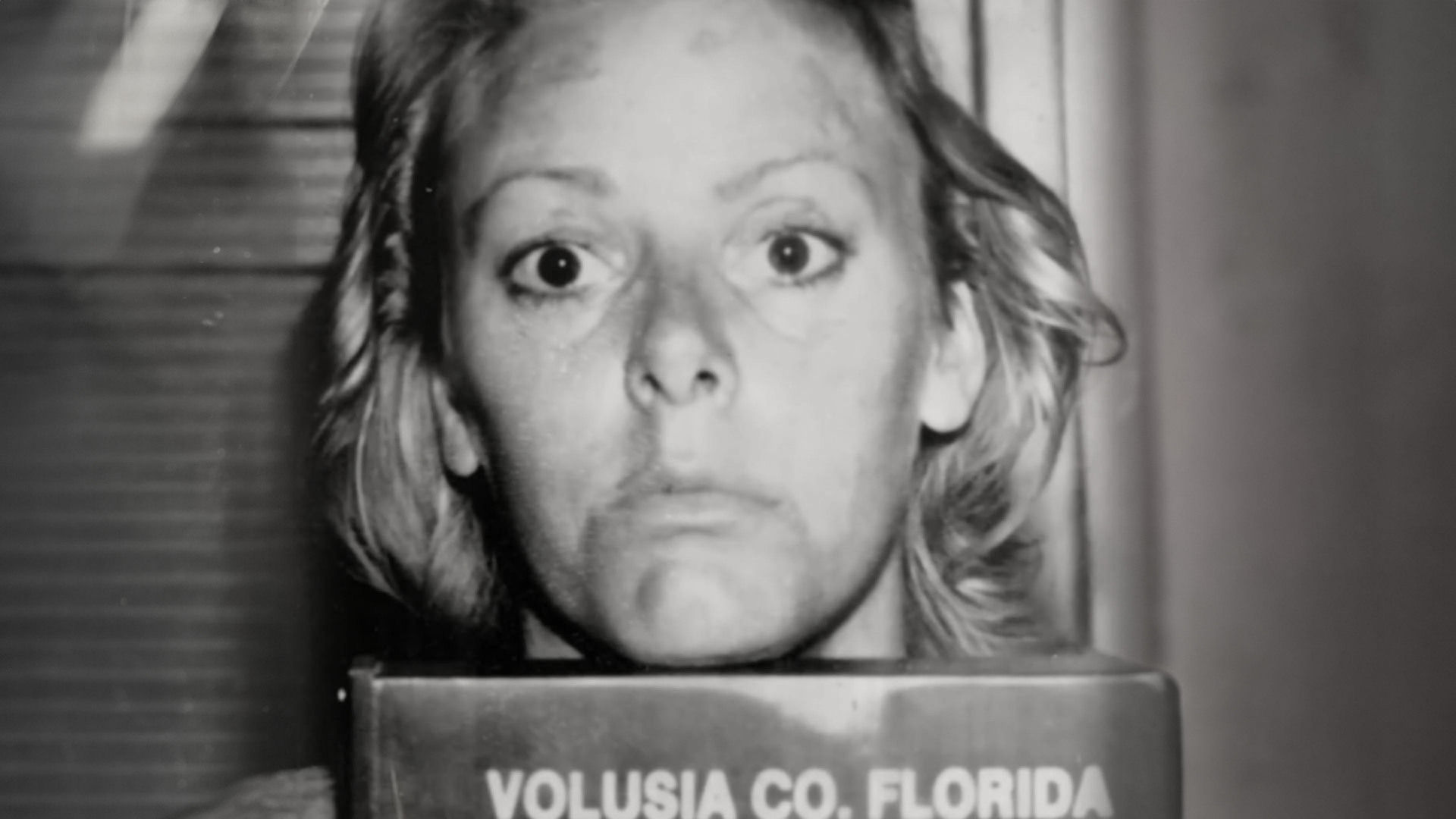Aileen Wuornos
Aileen Wuornos was a woman whose story blurs the line between victim and killer. Between 1989 and 1990, Wuornos murdered seven men along Florida’s highways, claiming she acted in self-defence against clients who tried to harm her. Her confession, conviction, and eventual execution made her one of the most notorious figures in American true crime. But behind the headlines lies a life scarred by neglect, abuse, and survival on society’s margins, leading us to ask the question: was Aileen Wuornos born a monster or was she made into one?
The Shattered Start
Aileen Carol Wuornos was born on a leap day, February 29, 1956, in Rochester, Michigan. But there was no luck or celebration for her at the start of her life. Her parents were teenagers who divorced before she was born. Her father, Leo Pittman, was a man with a dark history who would later commit suicide while imprisoned for child molestation. Her mother, Diane, abandoned Aileen and her brother, Keith, when Aileen was just four years old.
The siblings were adopted by their maternal grandparents, Lauri and Britta Wuornos. But this was no rescue; it was merely a change of location for the trauma. Aileen would later claim her grandfather, Lauri, an angry, harsh disciplinarian, sexually abused her from a young age. Britta, her grandmother, was an alcoholic, and the home was an incubator of chaos and violence.
By the age of 14, Aileen was expecting a child, although she attributed the pregnancy to rape. She was sent away to a home for unwed mothers, gave birth to a son who was immediately put up for adoption, and was essentially cast out by her family.
Now a child on her own, her survival strategy became the world’s oldest profession. She dropped out of school and became a transient figure, supporting herself through prostitution, hitchhiking, and petty crime. Her early adulthood was a revolving door of arrests for drunk driving, assault, and passing forged cheques. She was perpetually broke, perpetually moving, and carrying a deep, violent resentment toward the world she believed had abused her.
In 1986, Aileen found a brief harbour from life’s daily storm in Daytona, Florida. She met a woman named Tyria Moore at a gay bar. Moore was a hotel maid, and Aileen, calling herself “Lee,” became her dedicated, intensely possessive lover. Aileen continued to work the highways as a sex worker, a means of income she later described as dangerous but necessary. This toxic co-dependency set the stage for the darkness to come. Aileen was determined to protect their precarious life, and that determination soon turned deadly.
The Road to Murder
The violence began suddenly and shockingly. On November 30, 1989, Aileen picked up her first known victim: Richard Charles Mallory, a 51-year-old electronics store owner from Clearwater.
What happened in the secluded woods off the highway would become the central, fiercely contested narrative of the entire case. Wuornos claimed Mallory tied her up, violently raped and sodomised her, and explicitly threatened her life. She said she managed to grab her gun and shot him in pure, frantic self-defence. Later, at her trial, the defence would cite the fact that Mallory had a prior conviction for attempted rape as crucial evidence supporting her claim.
But the police saw something else: Mallory’s body was found two weeks later, shot multiple times. His car was gone, and his belongings were later discovered in Aileen’s possession. To the prosecution, this wasn’t self-defence; it was robbery that devolved into murder.
Regardless of the motive, the floodgates had opened. Over the next twelve months, Aileen Wuornos became a serial killer, targeting men she picked up on the highway, all middle-aged or older.
The timeline of victims painted a terrifying picture:
- May 1990: David Andrew Spears, a 43-year-old construction worker, was found naked and shot six times.
- May 1990: Charles Edmund Carskaddon, a 40-year-old rodeo worker, was shot nine times.
- June 1990: Peter Abraham Siems, a 65-year-old retired seaman whose car Aileen and Tyria were seen abandoning. His body was never found.
- July 1990: Troy Eugene Burress, a 50-year-old sausage salesman, was shot twice.
- September 1990: Charles Richard “Dick” Humphreys, a 56-year-old retired Air Force Major and former police chief, was shot seven times.
The final victim was Walter Gino Antonio, a 62-year-old trucker and reserve police officer, whose body was discovered in November 1990.
The police were utterly puzzled. They were hunting two women, one tall, blonde, and thin (Aileen’s appearance at the time), and one shorter and heavier (Tyria Moore). The violence was intensely male, multiple gunshots, abandoned bodies in the woods, a style rarely, if ever, seen in a female killer. The press was in a frenzy, coining the hyperbolic nickname, “The Damsel of Death.”
The Trap and the Confession
The search for the perpetrators intensified throughout 1990, spurred by witnesses who saw the two women abandon Peter Siems’s car. Police eventually identified a palm print from the vehicle and linked it to Aileen Wuornos. On January 9, 1991, Wuornos was arrested at a biker bar in Volusia County, Florida.
Crucially, Tyria Moore had been detained in Pennsylvania. Police leveraged Tyria’s fear of prosecution to convince her to act as an informant. In a series of agonising phone calls, Tyria tearfully confessed to Aileen that she had revealed everything and pleaded with Aileen to cooperate so they wouldn’t both go to prison.
The pressure worked. A distraught and emotionally vulnerable Aileen agreed to confess to the police. Against the fervent advice of her public defender, she went on camera and delivered a dramatic, rambling confession that cemented her fate.
She admitted to the killings, but insisted, time and again, that she was acting in self-defence. She had to “eliminate the witnesses,” she claimed, because all the men had attempted to rape, rob, or kill her. She framed herself not as a hunter, but as a victim who finally, violently, fought back.
The first trial, for the murder of Richard Mallory, began in early 1992. The defence team, attempting a groundbreaking strategy, argued that Aileen suffered from a form of Battered Woman Syndrome, that her constant victimisation over a lifetime, culminating in the violence that she was subjected to while working as a prostitute, made her paranoid and justified in using lethal force to survive.
But the prosecution hammered home two points: the sheer number of shots fired into the victims, and the simple, undeniable motive of robbery. Why steal the cars and pawn the jewellery if this was purely self-defence? The jury sided with the state.
When the verdict of Guilty of First-Degree Murder and Robbery was read out, Aileen erupted, screaming a curse upon the jury, hoping they would be raped. Days later, she was sentenced to death.
In the ensuing months, realising her fate, Aileen made a devastating choice: she pleaded no contest or guilty to the five other murders, a move that secured her six separate death sentences and also effectively fast-tracked her journey to the execution chamber.
Death Row and Final Words
Aileen Wuornos spent more than a decade on Florida’s death row. Her time there was erratic, marked by high-profile media interviews, documentaries, and an utterly bizarre legal adoption by a born-again Christian named Arlene Pralle. While waiting on death row, Aileen’s already fragile mental state continued to deteriorate.
In the final year before her execution, Aileen began to contradict her own story repeatedly. She dropped her appeals and expressed a desire to die, sometimes claiming a demon possessed her, other times saying she needed to go to her death with a clear conscience because she had killed for money, not just in defence.
Florida Governor Jeb Bush ordered a final psychiatric review. Despite evidence that she suffered from both Borderline Personality Disorder and Antisocial Personality Disorder, and may have been in the throes of a psychotic break, she was ultimately deemed legally competent to understand her impending punishment.
On October 9, 2002, Aileen Carol Wuornos, at the age of 46, was executed by lethal injection at the Florida State Prison in Starke. She declined a special last meal, asking only for a cup of coffee.
Her final statement was a haunting, nonsensical flurry of words, reflecting the deep break with reality that had consumed her:
Quote: “I’d just like to say I’m sailing with the rock, and I’ll be back like Independence Day, with Jesus, June 6. Like the movie, big mother ship and all, I’ll be back.” End quote.
The Legacy of a Monster
Aileen Wuornos left behind a complex and challenging legacy. For many, she remains nothing more than a monster, a cold, calculated killer who preyed on men. Her crimes fit the definition of a serial killer, and the motive of robbery cannot be dismissed.
For others, especially women’s rights advocates and legal scholars, her case is a tragic parable. They argue she was a victim of relentless, systemic abuse who was failed by society, the system, and her own profound mental instability. Her case became a crucial, if deeply flawed, focal point in the debate over expanding the legal definition of self-defence to account for a lifetime of trauma, particularly in the violent reality of sex work.
The media, particularly the 2003 film “Monster” starring Charlize Theron, focused mainly on the victim narrative, sparking fierce debate over the ethics of turning a serial killer’s life into sympathetic entertainment. The truth, as always, likely lies in the uncomfortable middle ground. Aileen Wuornos was both a victim of monstrous abuse and the perpetrator of hideous crimes. Her trajectory from an abandoned child to a death-row inmate reflects a perfect storm of social neglect, mental illness, and escalating violence, leaving behind a trail of dead men and a national conversation that still hasn’t found closure.
Aileen Wuornos FAQ
Aileen Wuornos was an American serial killer who murdered seven men in Florida between 1989 and 1990. She claimed the killings were in self-defence while working as a sex worker.
She was arrested in January 1991 at a biker bar in Florida after police linked her to the victims through stolen property and fingerprints found in the victims’ cars.
Wuornos claimed she killed to protect herself from violent clients, but prosecutors argued her crimes were motivated by robbery and anger toward men.
Convicted of six murders and sentenced to death, Wuornos was executed by lethal injection on 9 October 2002. Her story was later dramatised in the Oscar-winning film Monster (2003).






